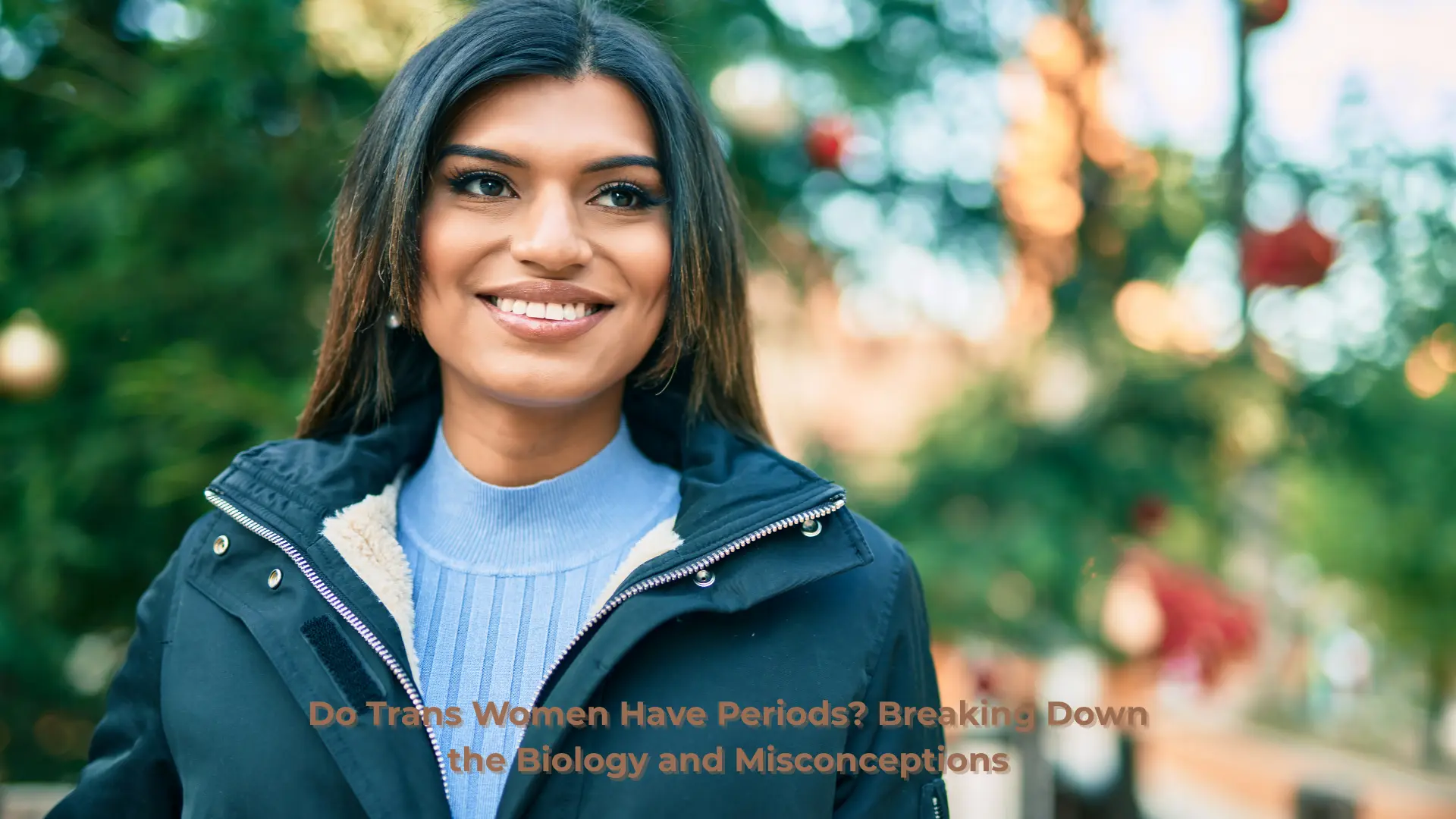Blog
Do Trans Women Have Periods? Breaking Down the Biology and Misconceptions

The question “Do trans women have periods?” surfaces often in online discussions, social media debates, and even in casual conversations. At first, it may seem like a simple biological inquiry, but beneath that question lies a much more complex story about the intersections of science, hormones, emotion, and identity.
Medically speaking, trans women don’t experience menstrual bleeding because they don’t possess ovaries or a uterus the organs responsible for the biological process of menstruation. Yet, that’s not the whole picture. Many trans women report recurring physical and emotional changes that closely resemble premenstrual syndrome (PMS) or premenstrual dysphoric disorder (PMDD), and these experiences are very real.
In this article, we’ll unpack what actually happens inside the body, explain how hormone therapy influences these symptoms, and clarify the misconceptions that often surround this sensitive yet important topic.
Understanding What a Period Actually Is
The United Kingdom’s National Health Service (NHS) explains that a period is the phase of the menstrual cycle where the uterine lining breaks down and exits the body through the vagina.
That process depends on two organs the ovaries and the uterus. Without them, menstrual bleeding can’t occur.
Trans women, who are typically assigned male at birth, don’t have these organs. That means the physical act of menstruation the monthly shedding of the uterine lining simply can’t happen.
But here’s where things get interesting. Menstrual cycles aren’t only about bleeding. They also involve hormonal fluctuations, and it’s those hormonal changes that cause PMS and PMDD symptoms. When trans women begin gender-affirming hormone therapy (HRT), their hormone levels change too and that’s where some similar experiences begin to appear.
What Hormone Therapy Does in Trans Women
How Hormone Therapy Works
For many trans women, transitioning involves taking estrogen often in pill, patch, or injectable form along with anti-androgen medications that reduce testosterone.
The most common anti-androgen prescribed is spironolactone, though some women are also given progesterone to balance hormone effects.
The goal of HRT isn’t to mimic a cisgender woman’s exact reproductive cycle, but to reduce gender dysphoria by feminizing the body. Estrogen helps redistribute body fat, encourages breast growth, and softens skin, while suppressing testosterone helps minimize facial hair and other typically masculine features.
Hormonal Side Effects
Estrogen and progesterone affect far more than physical appearance. They also influence mood, sleep, and energy levels. These shifts can cause some trans women to experience recurring symptoms headaches, irritability, fatigue, bloating, or breast tenderness that mirror what many cis women feel during PMS.
According to the International Association for Premenstrual Disorders (IAPD), fluctuating hormone levels during HRT can trigger PMDD-like symptoms in certain individuals. These are not “imagined” or psychological; they’re the body’s real response to hormonal change.
PMS-Like Symptoms in Trans Women
Emotional and Psychological Patterns
Trans women on estrogen therapy sometimes describe emotional ups and downs that occur in predictable cycles. They may feel more anxious, tired, or emotionally sensitive during certain times each month similar to how PMS affects mood before menstruation.
The U.S. Office on Women’s Health lists common PMS symptoms such as irritability, changes in sleep, appetite shifts, and sudden mood swings. Trans women on fluctuating estrogen doses report many of the same things, especially after injections, when hormone levels spike and then drop sharply.
Physical Experiences
Physical sensations also overlap. Estrogen can cause water retention, sore breasts, or mild abdominal cramping. Some report headaches or stomach discomfort that seem to appear on a monthly rhythm.
Of course, not every trans woman experiences these effects. Hormone therapy isn’t a one-size-fits-all process. The type of medication, dosage, and individual hormone sensitivity all play a role. Some may never feel cyclical changes, while others can practically “set a calendar” by them.
Why These Symptoms Happen
The science behind these PMS-like patterns lies in hormonal sensitivity. The IAPD notes that some people regardless of whether they’re cis or trans are simply more responsive to hormonal fluctuations. Even small shifts in estrogen levels can impact mood and body sensations.
For trans women, estrogen replacement therapy artificially introduces those fluctuations. Injections, for instance, create high peaks followed by dips, which can cause emotional swings or fatigue as the body rebalances. This is also why some healthcare professionals adjust doses or switch from injections to patches for steadier hormone levels.
Tracking PMS-Like Cycles
Just as cis women might use period trackers to monitor symptoms, trans women can do the same even without bleeding. Keeping a symptom journal or using a period-tracking app helps identify patterns.
Over time, patterns can become clear: maybe mood shifts happen every three weeks, or headaches show up after estrogen injections. Tracking makes it easier to talk with a doctor about potential adjustments.
If symptoms become intense or disruptive particularly signs of depression or severe anxiety it’s important to discuss them with a healthcare provider familiar with trans health and hormone therapy. Tracking data helps doctors see what’s normal and what’s not.

The Role of Support and Understanding
How to Be an Ally
Being supportive of trans women starts with one simple rule: don’t make assumptions.
Never assume someone’s gender, sexual orientation, or transition path. Some trans women use hormones; others don’t. Some have surgery; others don’t. None of those factors make someone “more” or “less” trans.
Also, never ask invasive questions about their bodies or what surgeries they’ve had. Those are private topics, and asking them implies someone’s identity depends on anatomy which isn’t true.
Advocating for Inclusivity
Allies can make a big difference by promoting inclusivity in everyday spaces schools, workplaces, clinics. Small changes like adding pronouns in introductions or using gender-neutral language (for example, “menstrual health” instead of “women’s health”) help everyone feel seen.
Listening to trans voices is key. Allies don’t have to be experts; they just need to be open to learning and willing to speak up for equality.
The Limits of Current Research
Here’s the truth: science hasn’t caught up to lived experience.
There’s very little formal research on PMS-like symptoms in trans women. Most available data comes from small studies or personal reports. The IAPD and other health organizations have called for more investigation into how feminizing hormones affect emotional and physical rhythms over time.
For now, the best evidence we have is a mix of anecdotal accounts and clinical understanding of how estrogen and progesterone influence the human body. The absence of bleeding doesn’t mean the absence of hormonal impact it simply looks different.
Conclusion; Beyond the Biology
So, do trans women have periods? Not in the traditional sense.
But the conversation doesn’t stop there. Hormone therapy can bring emotional and physical cycles that feel like periods, even without the bleeding. Those experiences are shaped by real biology and deserve understanding, not dismissal.
In the end, what matters most isn’t whether the word “period” technically fits it’s about acknowledging that everyone’s body reacts to hormones in its own way. For trans women, that reaction is part of a much larger journey toward feeling at home in their own skin. And that, more than anything, is worth understanding with empathy and respect.
